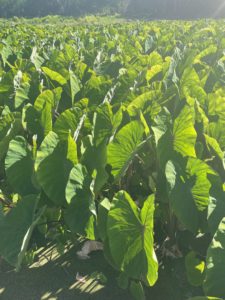
The beauty of Waipi‘o Valley
In Waipi‘o Valley, the community won an early victory in restoring streamflows taken by the former sugar plantation, but other opportunities await to uphold the public trust in water resources on the Big Island.
In Waipi‘o Valley, Lālākea and Hakalaoa streams form the famous Hi‘ilawe Twin Falls (also known as Hi‘ilawe and Hakalaoa Falls), then converge into Hi‘ilawe Stream, one of the two main waterways that support the native ecosystem and traditional farming community in the valley. For nearly a century, the former Hāmākua Sugar plantation drained the falls, completely dry at times, through its Lālākea Ditch System. When the plantation closed in 1994, Kamehameha Schools (KS) acquired the lands and ditch system. Although the ditch system was no longer needed, it continued to wastefully divert and dump stream water for years.

Chris Rathburn, Waipi‘o Valley
In 1995, the Waipi‘o Valley Community Association, represented by Earthjustice, brought legal action demanding the return of streamflows to the valley. After nearly 10 years of litigation, flow was restored to Lālākea and Hakalaoa Streams and Hi‘ilawe Falls in 2005. This was the second restoration of streamflows since the enactment of the State Water Code in 1987 and the first full return of flows taken by former plantation diversions.

Mature kalo ready for harvest
The work to bring accountability to plantation-era diversions on the Big Island is not over. Other ditch systems—such as the Kohala and Kehena Ditches that drain flows from the Kohala-Hāmākua watershed—have fallen into disrepair, yet continue to divert water without any instream flow protections. As development in areas like Kohala increases pressures on limited water supplies, it is only a matter of time before communities stand up to protect streamflows against unchecked private diversions.
